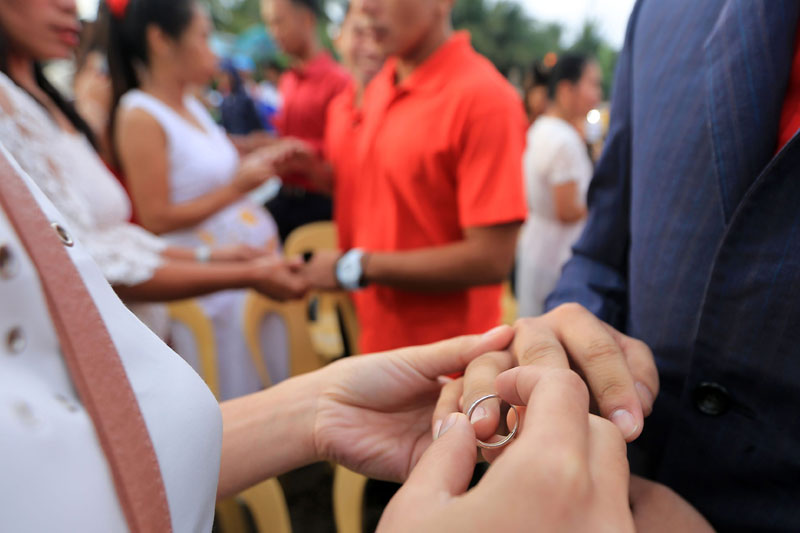Corregidor station monitors weather systems nearing MM
MANILA, Philippines - The historic island of Corregidor now joins the roster of the 30 automated weather stations established by Metro Weather that provides real-time weather data that can warn of severe weather conditions in Metro Manila.
The newly launched automated weather station (AWS) in Corregidor will provide the first source of information on extreme weather events that may be approaching Metro Manila from the West Philippine Sea. It is the 26th Metro Weather AWS among the 30 which are spread in major Metro Manila cities and strategic areas like Antipolo, Rodriguez, Angono, and Jala-jala in Rizal.
Ateneo-based Manila Observatory conceptualized the establishment of an urban network of AWS. It analyzes the data in relation to potential risk and provides research opportunities in urban disaster risk reduction and climate change.
The Metro Weather stations collect and store information such as rainfall, temperature, relative humidity, wind speed and direction, etc. It can be accessed through www.metroweather.com.ph, weatherlink.com, and the MMDA app (Metro Manila Traffic Navigator).
Data collected from the AWS network are transmitted and shared with the general public through a link between the Weatherlink website of the US Corporation Davis Instruments and the Manila Observatory servers.
The brainchild of Mrs. Antonia Loyzaga and Leslie Murray of the Filipino-American Memorial Endowment Inc., the Metro Weather station in Corregidor aims to prevent weather disasters like Ondoy, Pedring, and the northeast monsoon which had serious impacts to the whole country.
“These automated weather stations across Metro Manila provide not only data monitoring and perhaps an early warning system for modeling in terms of extreme weather events, but it truly provides research opportunities for urban risk disaster reduction and climate change studies,” Dr. Gemma Narisma, associate director for research of the Manila Observatory.
During the launch in Corregidor, US Ambassador Harry Thomas said Filipinos need to make their communities more resilient, especially in light of recent weather disasters like Hurricane Sandy that devastated the United States.
“On the recent flooding in Manila to the lingering devastation of Hurricane Sandy in the east coast of the US, it is clear that we all need to work hard to make our societies resilient to natural disasters. The data that this Metro Weather station will yield will not only help the MMDA better patrol Manila’s road lanes, it will also help the scientists at the Manila Observatory develop models for better weather forecasting, disaster preparedness and response,” Thomas said.
Fr. Jett Villarin, SJ, Ateneo de Manila University president, meanwhile said that through the Metro Weather stations, Filipinos get to know about climate change in a more local aspect.
“When you say climate change, you always have a global picture. No one really knows how climate change would affect the local (area) or the city. And for this you will need a high-resolution grid. By doing this Metro Weather network, I think we will get to know more about this big issue and how it will affect us as communities,” Villarin said.
The Manila Observatory, through its research in atmospheric physics, instrumentation development, climate change, and disaster risk reduction, creates relevant academic and research entry points for the analysis and communication of the AWS data.
Thomas also said the Metro Weather stations typify the kind of innovative cooperation he hopes to foster under the new US-Philippine Science and Technology rule.
“This project will expand the already significant science and tech links between our two countries. We are already busy on a government-to-government level, discussing joint priorities and working to ensure the best science and technology available,” Thomas said.
He also said that they are working directly with academic institutions to help scientists form linkages, expand educational changes, and make science more available to kids.
“The US government and the Philippine government have decided that we are going to work together with almost $40 million to do two things: ensure that more Filipinos are in doctorates, go to American universities to earn those doctorates, and come home like Dr. Jose Rizal. Also we are going to bring American professors to Philippine universities,” he said.
The launching of the Metro Weather station in Corregidor gathered the project partners, namely Chevron, the Manila Observatory, Globe Telecom, MMDA, and the Ateneo de Manila University.
The partners came together to establish a network of automated weather stations to supplement the government’s efforts in providing near real-time information on extreme weather for urban disaster reduction and climate change research.
Manila Observatory project development officer Deanna Marie Olaguer said there are plans to set up Metro Weather stations outside Metro Manila next year.
“The Manila Observatory and some new partners are hoping to launch in other Metro areas next year; there are discussions ongoing to this end,” Olaguer said.
Olaguer added the Manila Observatory is working closely with Ateneo de Manila and the other Ateneos and both public and private sector partners to assist in integrated risk analysis and climate change adaptation work.
- Latest





























